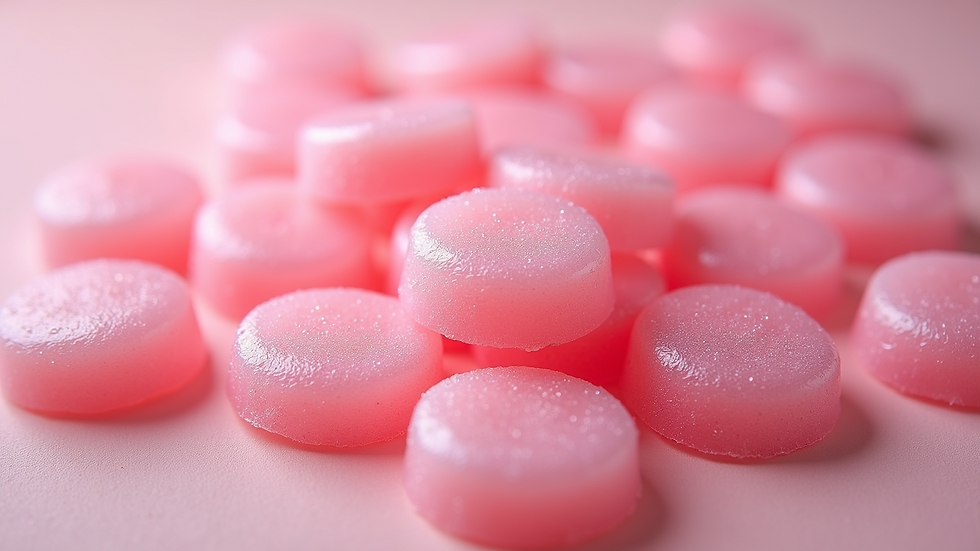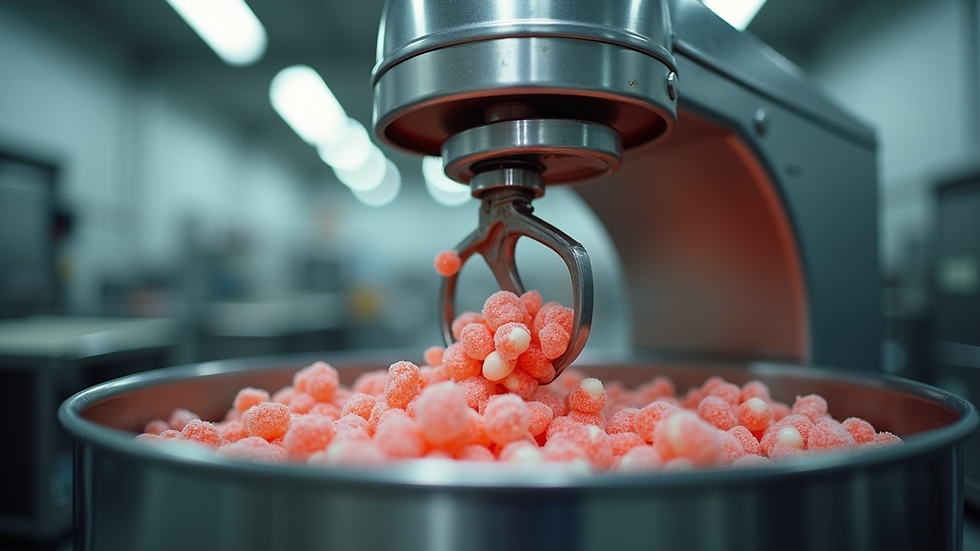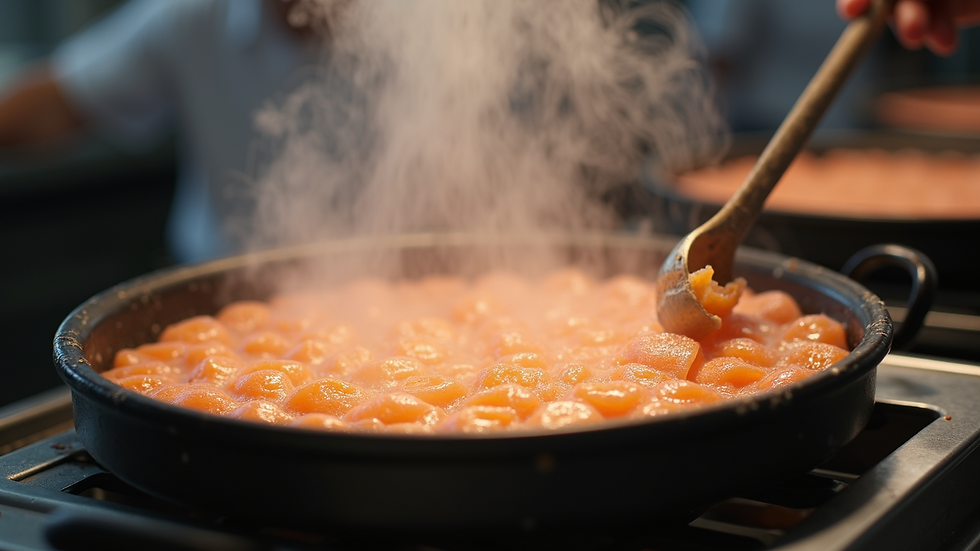The Process Behind Bubble Gum Extrusion Technology
- Usman Akram

- Aug 5
- 3 min read
Bubble gum extrusion technology is a fascinating process that transforms raw ingredients into the chewy, colorful gum we all enjoy. This technology involves precise machinery and careful control of ingredients to produce consistent, high-quality bubble gum. Understanding how a bubble gum extruder works can give you insight into the manufacturing process and the science behind your favorite treat.
How a Bubble Gum Extruder Works
A bubble gum extruder is a specialized machine designed to shape and form bubble gum into long, continuous strips or ropes. The process begins with mixing the gum base, sweeteners, softeners, and flavorings into a uniform dough-like mass. This mixture is then fed into the extruder, where it is heated and pushed through a die to create the desired shape.
The extruder uses a screw mechanism to move the gum mass forward while applying heat and pressure. This combination softens the gum and allows it to be molded without losing its elasticity. The die at the end of the extruder determines the gum's shape and size, which can be flat sheets, ropes, or other forms.
Once extruded, the gum is cooled and cut into pieces or rolled for packaging. The entire process is automated to ensure consistency and efficiency in production.

Key Components of a Bubble Gum Extruder
The efficiency of a bubble gum extruder depends on several critical components working together seamlessly:
Feeding System - This system introduces the gum mixture into the extruder. It must maintain a steady flow to avoid interruptions.
Screw Conveyor - The heart of the extruder, this rotating screw moves the gum forward while mixing and heating it.
Heating Jacket - Surrounding the barrel, this jacket controls the temperature to soften the gum without melting it.
Die Head - The die shapes the gum as it exits the extruder. Different dies produce different gum shapes.
Cooling System - After extrusion, the gum passes through cooling rollers or tunnels to solidify its shape.
Each component requires precise calibration to maintain the gum's texture and quality. For example, too much heat can degrade the gum base, while insufficient pressure can result in uneven shapes.

Why is there a bubble-like thing in my gum?
If you've ever noticed a small bubble or air pocket inside your gum, you might wonder why it forms. This bubble-like thing is often a result of the extrusion process itself. During extrusion, air can become trapped in the gum mass, especially if the mixture is not perfectly uniform or if the machine settings are slightly off.
These tiny air pockets are usually harmless and do not affect the gum's taste or chewability. However, manufacturers strive to minimize them because they can impact the gum's appearance and texture.
In some cases, the presence of a bubble in gum line can be a sign of a minor issue in the extrusion process, such as inconsistent feeding or improper screw speed. Adjusting these parameters helps reduce air entrapment and improves product quality.
For more detailed information on how to address this, you can visit bubble in gum line.

Practical Tips for Optimizing Bubble Gum Extrusion
To achieve the best results in bubble gum extrusion, manufacturers can follow these practical recommendations:
Maintain Consistent Ingredient Quality: Variations in gum base or sweeteners can affect extrusion performance.
Control Temperature Precisely: Use sensors to monitor and adjust the heating jacket to avoid overheating.
Optimize Screw Speed: Adjust the screw speed to balance pressure and flow rate, minimizing air pockets.
Regularly Clean Equipment: Gum residue can build up and cause blockages or inconsistent extrusion.
Use Proper Die Design: Select dies that match the desired gum shape and allow smooth flow.
Implementing these tips can improve production efficiency and product consistency, leading to better consumer satisfaction.
Innovations in Bubble Gum Extruder Technology
The bubble gum industry continues to evolve with new technologies enhancing extrusion processes. Some recent innovations include:
Advanced Control Systems: Automated feedback loops that adjust temperature and pressure in real-time.
Energy-Efficient Heating: Using induction or infrared heating to reduce energy consumption.
Improved Materials: Development of new gum bases that extrude more easily and produce fewer air bubbles.
Custom Die Designs: 3D-printed dies that allow for unique gum shapes and textures.
These advancements help manufacturers meet growing consumer demands for variety and quality while reducing production costs.

Understanding the process behind bubble gum extrusion technology reveals the complexity and precision involved in making a simple piece of gum. From ingredient mixing to shaping and cooling, every step is carefully controlled to deliver the perfect chew. Whether you are a manufacturer or simply curious, appreciating this technology adds a new layer of enjoyment to your bubble gum experience.




Comments